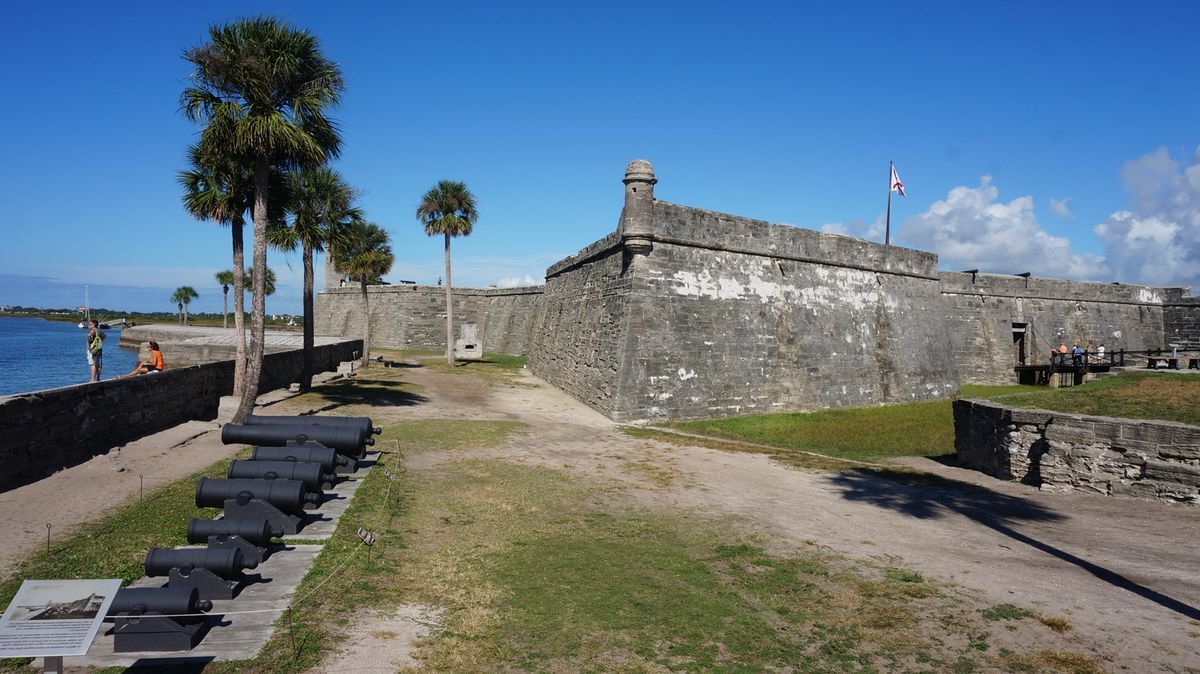Hidden Stories Of Florida’s Forgotten Seminole War Forts

Have you ever wondered about the hidden stories of Florida's forgotten Seminole War forts? These forts hold tales of bravery, conflict, and survival that shaped the state's history. Built during the Seminole Wars in the 19th century, they served as military outposts and refuges. Today, many of these sites lie in ruins or are completely forgotten, overshadowed by Florida's beaches and theme parks. Yet, they offer a unique glimpse into a turbulent period. Exploring these forts can be like stepping back in time, imagining the soldiers and Seminole warriors who once stood there. Ready to uncover these hidden gems? Let's dive in!
Florida's Forgotten Seminole War Forts
Florida's history is rich with tales of battles, bravery, and resilience. Among these stories are the Seminole Wars, a series of conflicts between the United States and the Seminole people. Scattered across the state, these forts played crucial roles in these wars. Today, many of these sites remain hidden gems, waiting to be explored.
Fort King
Fort King, located in present-day Ocala, served as a pivotal military post during the Second Seminole War. It was a site of numerous skirmishes and negotiations between the U.S. Army and the Seminole leaders.
- Fort King: This fort was established in 1827 and became a central point during the Second Seminole War. It was here that the famous Dade Massacre began, leading to a prolonged conflict. Today, visitors can explore a reconstructed fort and a museum that tells the story of the battles fought here.
Fort Brooke
Fort Brooke, situated in what is now Tampa, was one of the largest and most important forts during the Seminole Wars. It served as a supply depot and a launch point for military campaigns.
- Fort Brooke: Established in 1824, Fort Brooke played a significant role in the First and Second Seminole Wars. The fort's strategic location near the Hillsborough River made it a crucial supply and communication hub. While much of the original fort has been lost to development, historical markers and a small park commemorate its legacy.
Fort Foster
Fort Foster, located near the Hillsborough River, was built to protect a crucial bridge crossing during the Second Seminole War. This fort offers a glimpse into the life of soldiers during this tumultuous period.
- Fort Foster: Constructed in 1836, Fort Foster was designed to defend the Hillsborough River bridge. The fort has been meticulously reconstructed, allowing visitors to step back in time and experience the challenges faced by soldiers. The site also hosts reenactments and educational programs, bringing history to life.
Fort Dade
Fort Dade, named after Major Francis L. Dade, who was killed in the Dade Massacre, played a significant role in the Second Seminole War. Located on Egmont Key, this fort has a unique history and picturesque setting.
- Fort Dade: Established in 1835, Fort Dade was a key military installation during the Second Seminole War. The fort's location on Egmont Key provided a strategic advantage for controlling access to Tampa Bay. Today, visitors can explore the remnants of the fort, enjoy the island's natural beauty, and learn about its history through interpretive displays.
Fort Mellon
Fort Mellon, situated in present-day Sanford, was another important fort during the Second Seminole War. It was named after Captain Charles Mellon, who was killed in a battle with the Seminoles.
- Fort Mellon: Built in 1837, Fort Mellon was a crucial outpost in the effort to control central Florida. The fort witnessed several skirmishes and served as a base for military operations. Although the original fort no longer stands, the site is marked by a historical monument, and the nearby Fort Mellon Park offers recreational opportunities and historical insights.
Fort Pierce
Fort Pierce, located on Florida's east coast, was established during the Second Seminole War. It served as a supply depot and a base for military operations in the region.
- Fort Pierce: Established in 1838, Fort Pierce played a vital role in the Second Seminole War. The fort's location near the Indian River allowed for easy access to supplies and reinforcements. Today, the site is home to the National Navy UDT-SEAL Museum, which preserves the history of the fort and its later use during World War II.
Fort Christmas
Fort Christmas, built during the Second Seminole War, is now a historical park that offers a glimpse into the past. The fort has been reconstructed, and the park features several historic buildings and exhibits.
- Fort Christmas: Constructed in 1837, Fort Christmas was part of a network of forts aimed at controlling the Seminole population. The reconstructed fort and surrounding park provide a fascinating look at life during the Seminole Wars. Visitors can explore the fort, visit historic homes, and enjoy various educational programs.
Discovering Florida's Hidden History
Florida's forgotten Seminole War forts offer a unique glimpse into the past. These sites tell stories of conflict, resilience, and cultural exchange. Visiting these forts, like Fort King and Fort Foster, provides a deeper understanding of the state's history beyond its famous beaches and theme parks.
Exploring these historic locations can be a rewarding experience. You can walk the same grounds where soldiers and Seminole warriors once stood. The remnants of these forts serve as a reminder of the struggles and triumphs that shaped Florida.
Next time you plan a trip to Florida, consider adding these hidden gems to your itinerary. They offer a rich, educational experience that goes beyond the usual tourist spots. Dive into the past and uncover the stories that have been waiting to be told.

